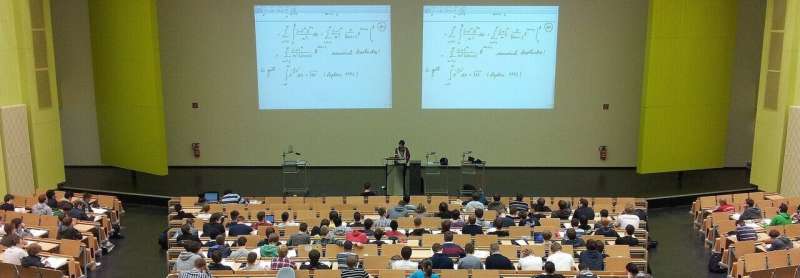Analyzing extracurricular activities in college admissions process to improve access

In recent years, discussions about inequality in the college admissions process have focused on the use of standardized tests like the SAT. But few discussions have focused on another important part of the college application: the listing of extracurricular activities.
With on the reporting of extracurriculars, University of Delaware Associate Professor Dominique Baker offers new ways to ensure that all students have an equal opportunity to demonstrate their academic and leadership potential. The research is published in the American Educational Research Journal.
With colleagues from multiple universities, the Common App and the College Admissions Futures Co-Laborative, Baker analyzed extracurricular activity descriptions in more than 6 million Common App applications using natural language processing.
They found that white, Asian, wealthier and private-school students reported more activities, top-level leadership roles and distinctive accomplishments than their peers in other racial, ethnic and socioeconomic groups. But while underrepresented minority students listed fewer activities and leadership roles, they reported similar proportions of top-level leadership roles as their white and Asian American peers.
"All students do not have the ability to sign up for eight, 10 or 15 extracurricular activities," said Baker, who specializes in education policy in the College of Education and Human Development (CEHD) and the Joseph R. Biden, Jr. School of Public Policy and Administration.
"For example, some students need to work to help their family be able to afford their housing and groceries."
With the patterns in reporting that her research reveals, Baker and her colleagues offer recommendations that can help organizations like the Common App and individual admissions offices create a better process for applying to college.
1. Reduce the number of reported activities
Baker and her colleagues suggest reducing the maximum number of possible activities on college applications like the Common App, which currently allows students to list up to 10. Reducing this number to four or five and encouraging admissions readers to focus on the quality and intensity of a student's participation (rather than the breadth and quantity) may level the playing field for students who do not have the opportunity to participate in such a large number of activities.
"We know this is something that universities are considering," Baker said. "For example, recently, Lafayette College changed its admissions evaluation process and reduced the number of extracurricular activities it will review from 10 to six. We don't have the data to explore how this change worked, but I note this to highlight that our recommendation is one that admissions professionals are already considering."
2. Consider contextual factors
Given the high turnover in college admissions, Baker and her colleagues also recommend formal training for personnel that helps them make fair evaluations. Specifically, the researchers encourage college admissions staff to take opportunity, hardship and other contextual factors into consideration when they evaluate applications.
"When I worked in admissions, one of the critical parts of my job was making sure I grounded myself in the context of each applicant," said Baker, who previously served as assistant dean in the Office of Undergraduate Admissions at the University of Virginia.
"This helped me to better understand the opportunities they had available to them, which is a technique research shows provides the best opportunity for crafting an incoming class of students with strong academic backgrounds and diversity along a number of dimensions."
3. Understand specialized activities
Baker and her colleagues also recommend that admissions staff continue to discuss how specialized athletics and other limited-access activities are valued in relation to other extracurriculars. Many specialized athletics, like rowing and lacrosse, for example, require a substantial financial investment, and high schools across the country do not uniformly offer those opportunities to their students.
"Beyond general context, admissions professionals must understand how people can gain entry to different types of activities," Baker said. "This consideration would allow admissions professionals to go beyond mere counts of extracurriculars and allow for a nuanced understanding of students' educational pathways."
These recommendations make sense to Jamie Bailey, a student recruiter for teacher preparation programs in CEHD's Center for Excellence and Equity in Teacher Preparation. She travels across Delaware to speak with high school students about careers in education and helps familiarize them with UD's application process.
"As someone who recruits high school students into education pathways, I see firsthand how structural barriers impact students' ability to showcase their talents," Bailey said.
"We can break down these barriers by adopting a more holistic review process that values lived experiences and resilience as much as formal activities and leadership positions."
More information: Julie J. Park et al, Inequality Beyond Standardized Tests: Trends in Extracurricular Activity Reporting in College Applications Across Race and Class, American Educational Research Journal (2024).
Journal information: American Educational Research Journal
Provided by University of Delaware




















